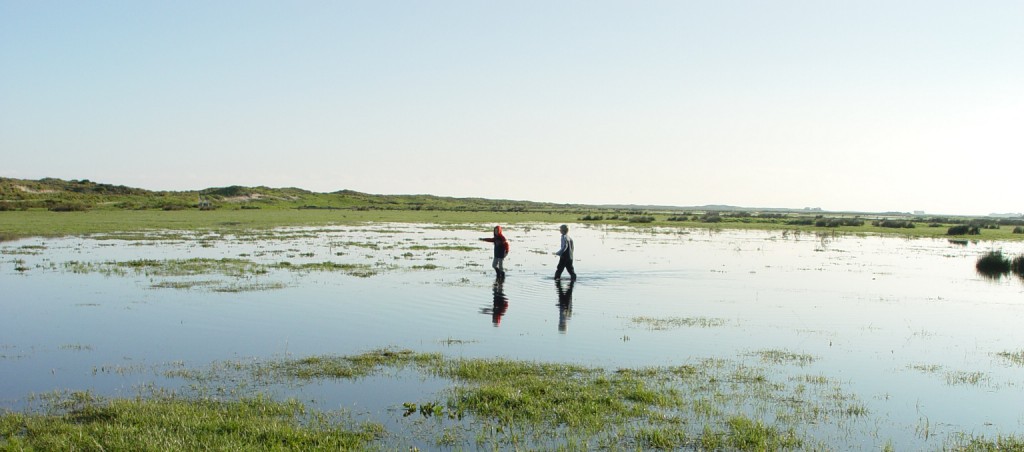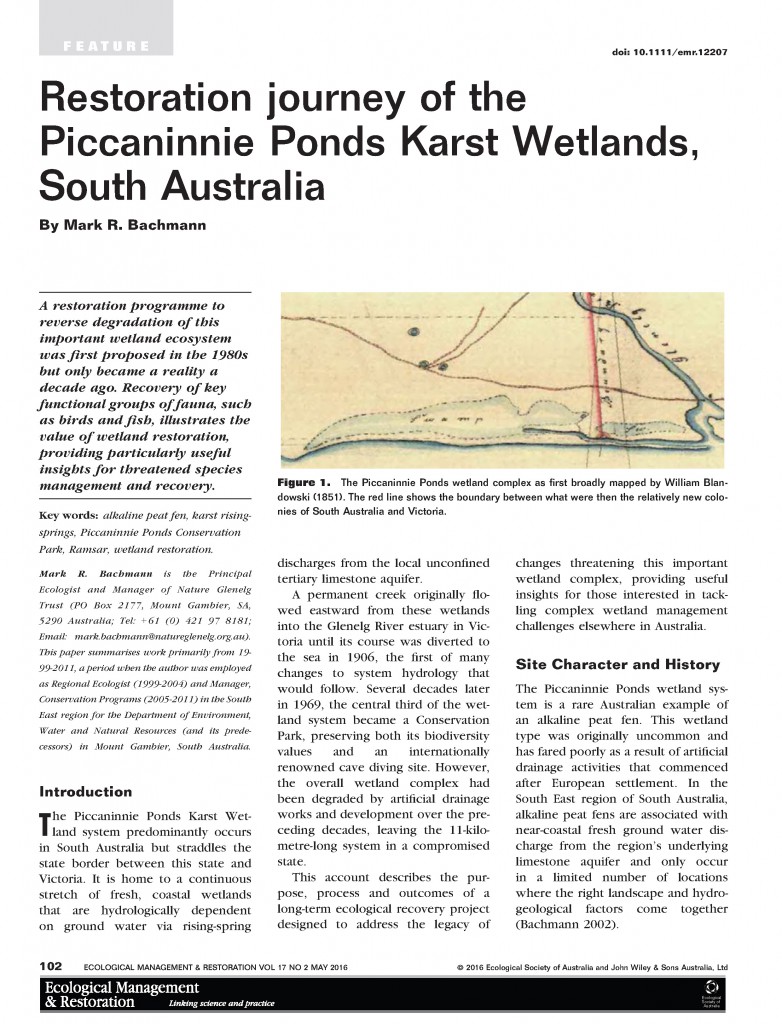Reflecting on a 15 year restoration journey at Piccaninnie Ponds
After all the talks I have given over the years in various places about Piccaninnie Ponds (e.g. Mt Gambier, Adelaide, Portland, Hamilton, Melbourne, Canberra, Brisbane, Wellington (NZ) and Prague (CZ) – to name a few!), last year I was approached and asked to provide an overview of the restoration story for Piccaninnie Ponds, to appear as a feature article in the journal Ecological Management and Restoration.
It isn’t often you get to look back, reflect and fully summarise a long-term environmental project, so for me putting the story on paper like this (up to this point in time) is a significant moment in what has been a long and thoroughly rewarding journey – a journey that has brought me into contact with so many wonderful, committed people.

With initial drain blocking works underway, Pick Swamp was starting to fill with water again for the first time in 35 years. As it was before the winter rains, this process was driven purely from spring discharges that were no longer being drained directly into the sea. This was the day I finally took my kids to see what I’d been working towards for several years prior. We walked together across the paddocks, following the waters edge as it crept across the land before our very eyes. One of my most treasured memories! It is now 9 years later, and Pick Swamp has been permanently inundated and alive with restored biodiversity ever since.
As I describe in the article, for me the story began when Tim Collins (then Senior Ranger, now Regional Director) dropped some files on my desk not long after I started working in the then DEHAA office in Mount Gambier in 1999 and all these years later I look back with both pride and amazement at how much has been achieved since that time. After all, everything that has happened since is only because of the collective efforts of so many people working together towards a shared vision. To all those people (too many to name here, but whom I have contacted separately) – well done and thank you!
One person I will mention specifically however is Steve Clarke (DEWNR, Mount Gambier), who has been the driving force behind works on the ground since he started with the then South East CPU (Conservation Programs Unit) in 2006. Thanks Steve!
If you would like to access a copy of the paper, which has just been published online, please download it here or visit the publishers website here. (Note: only the first page is shown below).
Finally, if you are interested to hear all about our karst wetlands and the amazing aquatic life they support, including more about Piccaninnie Ponds – myself and Nick Whiterod will be giving a talk next Thursday evening (26/5/2016) at Port MacDonnell – details can be found here: http://natureglenelg.org.au/our-coastal-karst-rising-springs-are-in-the-spotlight-this-may/.

